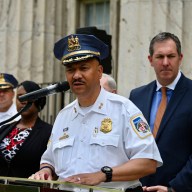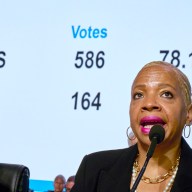Thanks to effective lobbying and worsening traffic congestion, York Region and northern 416 are about to experience the benefit (and construction pain) of new subway, bus and light rail routes. Above and below the Steeles Avenue boundary, planners and engineers are working on a long list of transit upgrades.
By the end of August, buses will start using an express route to York University. Delayed for years by politics and most recently by design problems, the York U busway will link Downs-view subway station with the Keele Street campus. By November, students and staff should be able to travel traffic-free along Dufferin Street and across a special bus road north of Finch Avenue.
Work is beginning on the Spadina subway extension northwest to Highway 7 in Vaughan. The 8.6-kilometre route is expected to cost $2.6 billion and open in 2015. The busway, although shorter, required barely more than $30 million and took just a few years to build. Although these exclusive lanes should significantly help transit riders, the university lobbied in favour of the more expensive subway option.
Queen’s Park and Ottawa have also agreed to pay for express bus lanes along Highway 7 as well as parts of Yonge Street in Richmond Hill and Newmarket.
Brampton asked for money, too, and by 2010 its Zum (as in zoom) service will run special buses along Queen Street — similar to York Region’s Viva network and the TTC’s imminent “Bus Transit City” proposal.
Politicians in other parts of the GTA were not off the mark as fast as their counterparts in York and Toronto. The TTC is busy designing and preparing to start construction of new light rail lines on Sheppard Avenue East and Finch Avenue West — across the northern tier of the city.
Metrolinx, which recently merged with GO Transit, is also studying the expansion of the Yonge subway to Richmond Hill. A proper study must take into account GO’s plans to upgrade north-south commuter rail lines in York Region.
Eventually, a Yonge extension will be needed. Construction may possibly coincide with a proposed Downtown Relief Line. The “DRL,” an east-west subway corridor, could ease pressure on busy interchange stations and make it possible to pour thousands more people onto Yonge trains north of Steeles Avenue.
Lobbying for this new subway line started late, but central Toronto residents can argue they deserve transit funds, too.
















